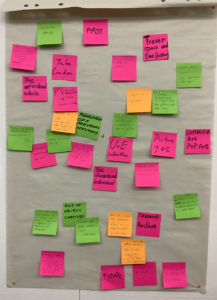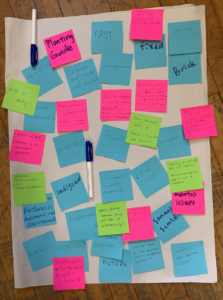Week 5 | Atelier #1: Creating Research Object
This course is an Atelier.
Every basho engage a common enquiry, analyse/creating research object through feedback from students of different discipline on the same work.
Professor Neil provides four objects, which are: Artefact A:Tottenham Court Road Mosaic Arches. Artefact B: A Zine: Passive Solar Greenhouse Project. Artefact C: Title Unknown sculpture. Artefact D: Eraser Drawing.
Before discussing the work, the professor gave us an idea for discussion – think in terms of time.
Artefact A, for example, used to be part of a metro station building, now it is an art collection, what will it be in the future?
When I learned that artefact A was once part of an underground station arch, a story of travel came to mind – it was once a witness to space travel (people going through the arch to get on the underground to another dimension). Now I look at it as a work of art and imagine what it will look like in the future (at this moment it becomes a key player in time travel). What fun.
I also learned that the author of Artefact A, Eduardo Luigi Paolozzi, was one of the pioneers of Pop Art, so Artefact A can be considered as a proof of the history of Pop Art in Britain.
During the course, the four groups rotated through to different artwork spaces and left their views through notes. Each time I swapped locations, I was able to discover new ideas through the notes left by the previous group, which helped me explore the artwork.
When studying the object, it is important to approach it from multiple perspectives.








Good quick summary of the Atelier. Some more detail on WHY we worked this way and what it is intended to achieve would be helpful. What aspects of the processed worked well, what didn’t work? Did some of the Artefacts resist the method or did the method work with all of them? What aspects, if any, would you adopt from the Atelier and why?